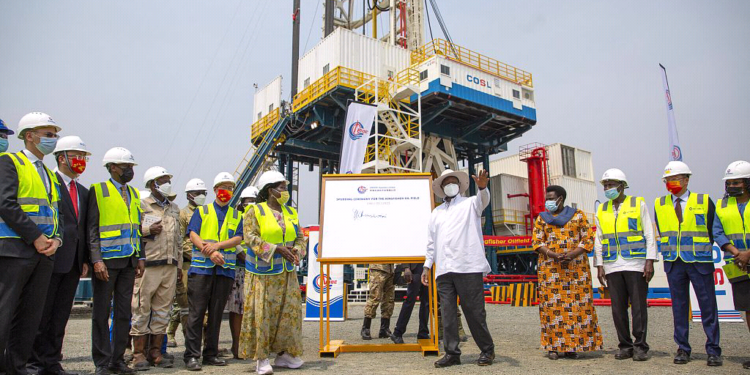Uganda’s extractive industry took bold steps forward in 2024, emerging as a key pillar in the country’s economic development, according to a recent report by the Ministry of Energy & Mineral Development.
A combination of government-backed reforms, heightened international interest, and a commitment to sustainability positioned the mining and oil sectors as crucial drivers of future growth. The year was marked by significant investment and policy innovations, though challenges remain in balancing resource extraction with environmental and social concerns.
Uganda’s mining sector has experienced a notable transformation, signaling the country’s growing prominence on the global minerals map. In a strategic move to better manage the country’s natural resources, the government launched a state-owned mining company tasked with overseeing its equity in mining operations. This initiative is part of a broader vision to ensure that Uganda maximizes the economic returns from its mining sector, with a focus on both improving regulatory oversight and attracting more investment.
The report indicates that government’s fiscal support in 2024 was evident, with Shs 41.55 billion allocated to mining-related projects, including the Mineral Resource Infrastructure Development Project (MRIP). This funding is aimed at boosting infrastructure in key mining regions, ensuring that the country can better monitor extraction processes and safeguard against potential environmental degradation.
The year also saw increased exploration activities, particularly in the Karamoja region, where significant deposits of gold and copper were discovered. These findings have positioned Uganda as a potential competitor in the global mineral market, particularly as the demand for critical minerals like lithium and cobalt, essential for green technologies, continues to surge. Experts suggest that Uganda could become a critical supplier for the growing electric vehicle and renewable energy sectors, both key to global sustainability goals.
Policy reforms in the mining sector were another major highlight. Amendments to the Mining and Minerals Act, 2021, streamlined the licensing process, improved transparency, and made the regulatory environment more investor-friendly. The Uganda Chamber of Mines & Petroleum (UCMP) played a pivotal role in facilitating partnerships between foreign investors and local businesses, further solidifying the sector’s growth trajectory.
Oil and Gas Sector: A Balancing Act Between Development and Sustainability
Despite global pressures to transition to cleaner energy, Uganda’s oil and gas sector made significant strides in 2024. With a projected capital expenditure of $2.9 billion, the country advanced key projects, including the East African Crude Oil Pipeline (EACOP) and the Tilenga and Kingfisher oil developments. These projects are central to Uganda’s strategy of tapping into its oil reserves, with EACOP serving as a critical infrastructure project to transport crude from the Albertine region to the Tanzanian port of Tanga.
While these developments signify progress, Uganda’s oil industry is also keenly aware of the global shift toward renewable energy.
The implementation of the Energy Transition Plan, introduced in late 2023, reflects Uganda’s commitment to a greener future.
The plan aims to blend renewable energy integration with revenue from hydrocarbon resources to fund the transition. This dual approach underscores Uganda’s desire to leverage its oil and gas reserves responsibly while also committing to environmental sustainability.
Collaborations with global energy giants and regional partnerships within the East African Community (EAC) have been central to Uganda’s strategy. These partnerships focus on shared resource management, sustainable energy development, and environmental protection—key factors that have driven cross-border cooperation in the extractive sector.
Critical Minerals: Unlocking New Potential for Economic Diversification
As the global demand for critical minerals—essential for renewable energy technologies like electric vehicles and solar panels—continues to rise, Uganda is positioning itself as a key player in this emerging market. The country’s growing mineral reserves, combined with its strategic location and expanding infrastructure, have the potential to transform Uganda into a regional hub for critical mineral production.
The integration of new technologies, such as artificial intelligence and blockchain, has further boosted transparency and efficiency in the mining sector. These innovations are not only attracting foreign investment but are also streamlining regulatory processes, making the sector more accessible to local businesses.
However, experts warn that infrastructure gaps, particularly in remote mining areas, continue to hinder operational efficiency. For Uganda to fully capitalize on its mineral wealth, investments in transportation and energy infrastructure will be critical.
Additionally, the country’s growing focus on education and training is seen as vital to building a skilled workforce capable of supporting the sector’s expansion. As more investments flow into the extractive industry, it is expected that local capacity-building initiatives will help bridge the skills gap and foster greater local participation in the sector.
Looking ahead, Uganda’s extractive industry remains poised for further growth, driven by strategic investments, regulatory reforms, and a stronger focus on sustainability. The government’s continued push for resource development, coupled with a growing international interest in the country’s natural resources, sets the stage for further economic diversification.
Do you have a story in your community or an opinion to share with us: Email us at editorial@watchdoguganda.com













